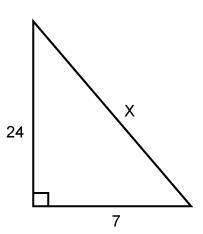
Mathematics, 04.08.2021 01:00, potato1458
In a large study designed to compare the risk of cardiovascular disease (CVD) between smokers and nonsmokers, random samples from each group were selected. The sample proportion of people with CVD was calculated for each group, and a 95 percent confidence interval for the difference (smoker minus nonsmoker) was given as (−0.01,0.04). Which of the following is the best interpretation of the interval??
a. We are 95% confident that the difference in proportions for smokers and nonsmokers with CVD in the sample is between -0.01 and 0.04.
b. We are 95% confident that the difference in proportions for smokers and nonsmokers with CVD in the population is between -0.01 and 0.04.
c. We are 95% confident that the proportion of all smokers with CVD is greater than the proportion of all nonsmokers with CVD because the interval contains more positive values.
d. The probability is 0.95 that for all random samples of the same size, the difference in the sample proportions for smokers and nonsmokers with CVD will be between -0.01 and 0.04.
e. The probability is 0.95 that there is no difference in the proportions of smokers and nonsmokers with CVD because o is included in the interval -0.01 and 0.04.

Answers: 1
Other questions on the subject: Mathematics

Mathematics, 21.06.2019 13:10, kcarstensen59070
Anthony is making a collage for his art class my picking shapes randomly. he has five squares, two triangles, two ovals, and four circles. find p( circle is chosen first)
Answers: 1

Mathematics, 21.06.2019 15:20, aliceotter2007
Asmall (but heavy) particle placed in a glass of water will follow a zigzag motion because the particle will bounce off of the water molecules it meets. this is called brownian motion. a physicist simulates this on a computer, by varying the distance a particle can travel (called the mean free length), on average, before it collides with a water molecule and assigning the change in motion to be one of 8 directions, each with a similar probability. by running the simulated particle (with the same mean free length) many times she determines that it should take 15 seconds, on average, for the particle to fall to the bottom, with a standard deviation of 1.5 seconds. next she lets a real particle fall through a glass of water and finds that it took 18 seconds. what does she conclude, and why?
Answers: 1

Mathematics, 21.06.2019 16:30, Thejollyhellhound20
What is the remainder when 2872 is divided by 76? a) 51 b) 57 c) 60 d) 63
Answers: 2

Mathematics, 21.06.2019 17:40, kazmiere2005oye9tz
Afamily of five rents a kayak and splits the total time, k, equally. each family member spent less than 25 minutes kayaking. which values can be used to complete the math sentence below so that it accurately represents the situation? intro done
Answers: 2
Do you know the correct answer?
In a large study designed to compare the risk of cardiovascular disease (CVD) between smokers and no...
Questions in other subjects:




Mathematics, 16.06.2020 22:57




Mathematics, 16.06.2020 22:57








